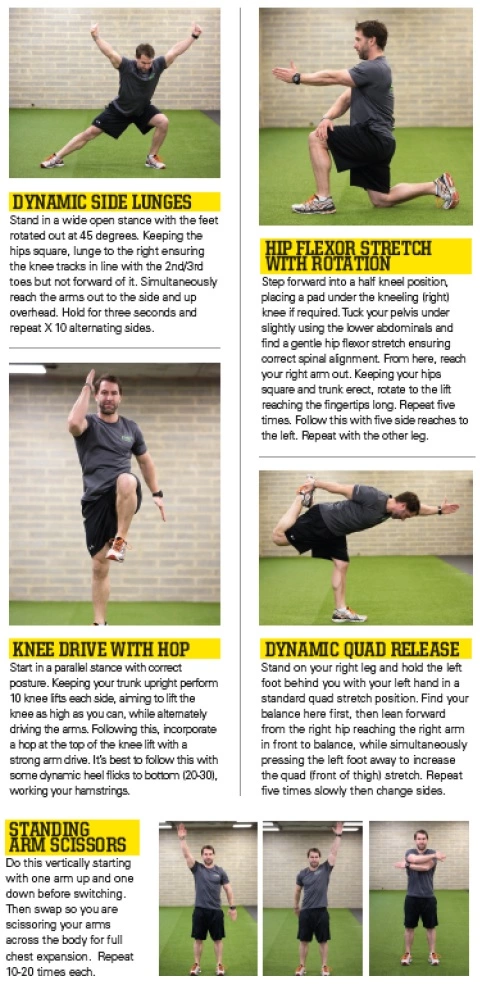Fiona Troup at Six Physio, explains the importance of warming up and cooling down correctly.
While the current cold snap temperatures aren’t rising as fast as the increase in our training, this can cause problems. Cold weather can make our tissues feel stiffer due to the reduction in surface blood flow in an attempt to maintain body temperature. Extra strain is also added if you’re not dressed appropriately or your warm up and cool down processes are inadequate.
Physios often see an increase in tension related neck and lower back pain due to people habitually shrugging their shoulders to their ears and hugging themselves when it’s cold.
The tissues around the neck and shoulders are already under load from work and too much time spent on computers and hand held devices. It is really important to incorporate postural mobility and activation exercises into your daily routine and as part of your warm up and cool down routines.
How to warm up
Your warm up should follow the RAMP protocol: Raise, Activate, Mobilise, Potentiate. The warm up can be anywhere from 10-30 minutes, and the goal is to increase muscle and core temperature, improve joint fluid suppleness and increase blood flow while freeing any areas of connective tissue stiffness. A hugely important and often forgotten component is to activate optimal movement and neural patterns.
First raise your heart rate with low intensity activities such as walking, jogging, gentle bike or a slow swim. Try a series of dynamic exercise that train movement skills for 5 – 10 minutes.
Then activate the essential muscle groups and mobilise relevant joints through a range of motion required for the session ahead. This may include rehab or pre-activation style exercises such as overhead squats, walking lunges and calf raises. Focus on dynamic movement patterns rather than individual muscles. The “potentiate” phase focuses on improving effectiveness of the performance such as speed and agility drills for cardiovascular-based exercise or for resistance training with lighter explosive sets.
How to cool down
The goal of the cool down is to return to your resting state and to aid recovery. It should help in redistributing blood and metabolic waste products from the muscles, and help you psychologically wind down. Five to ten minutes is usually enough for a warm down. Bring your heart rate down gradually with a lower intensity movement series (slow jog/swim/cycle). The evidence around stretching is a little contentious, but the main thing is to stretch and mobilise when you are warm. If you are have been training outside and are cold, it is advisable to change into some warm clothes or even take a warm bath before completing stretching. Form is critical. Ensure you don’t over stretch and hold positions for around 30 – 90 seconds. Using a foam roller and spikey balls can help too.


